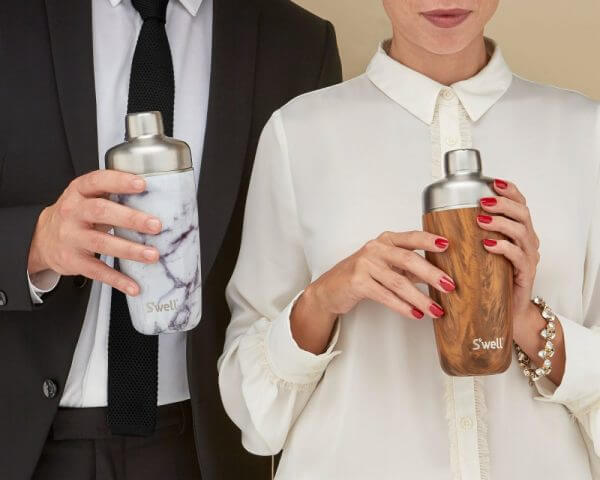Modern Luxury: Redefining Style and Status

There’s been much talk about how we’re in the midst of a new Gilded Age, a time when growing poverty, rising inequality and increased power and political influence among the most wealthy is creating marketplace volatility, consumer skepticism and cultural angst.
Like other moments of economic, social and cultural transformation, the stakes are high for legacy luxury brands and upstarts alike to show up in ways that are both relevant for this moment and honor our deepest human aspirations. In the face of declining sales and cultural challenges, what matters now?
What we’ve learned is that whether you are among the one-percent, or just getting by, we all share a need to feel recognized for our worth. We all crave status that’s rooted in our human need for validation, recognition and social standing.
But status for one person can mean something entirely different for another. The commonality is that, if we’re being honest, the products we buy are a reflection of who we are, what we seek to become and what we’ve accomplished in life so far. And luxury products give us a way to reward ourselves, validate our self-worth, and show off what we’ve achieved because, hey, we worked for it.
So as we all strive to live our best lives in spite of the divides in our society, the modern definition of luxury is bending and widening for a world where we can create our own symbols of status rather than having them defined for us.
From our recent work crafting modern narratives for heritage luxury brands like Estée Lauder, and our explorations into how to leverage the dynamics of desire for increased brand relevance, here are some ways luxury brands are rethinking their role in a world of ever-changing, ever-rising consumer expectations.
Four Design Principles For Modern Luxury

Self Love, Not Just Label Love
Historically, luxury has reflected the values of the brands who set the standard. Dictating which style, which scent, which logo, which shade of cerulean denotes a person of refined taste. But today, more and more brands are entering the luxury space by reflecting the emerging values of the consumer. They do this by delivering on very specific aspirations: a devotion to health and wellness, a concern for the environment, or a dedication to leading-edge tech, for example.
In today’s Instagrammable world, luxury consumers, particularly among Millennials, are curating elements of their lives, their closets and calendars with the utmost intention as a symbol of who they really are. This means they are “mixing and matching” where they go luxury, and in which categories they are cost-conscious. It all goes back to what they value and care about most. Someone might skip the hunt for high-end designer jeans or that must-have handbag but gladly invest in an unlikely fashion accessory: a stylish, curvaceous S’well water bottle that signals her personal concern for the environment. Or you might find someone treating themselves to a sparkling CBD-infused beverage from Recess, because for them self care is priceless.
The takeaway: The truth is that there is no single ‘quintessential’ luxury shopper anymore. They vary by occasion and category. Brands that seek to win hearts, minds, and loyalty must tap into their individual aspirations and their curatorial instinct to make life their own unique work of art.

Authentic Connection to Story, Place and Time
In today’s overwhelming, always-on world, people want to feel connected to rituals and traditions that make them feel grounded through change. This is where heritage luxury brands have an edge – and also face a risk. Neither fads nor trends, inherent in heritage brands is a deeply-rooted story. Yet that doesn’t mean there isn’t room for newcomers; they just need a clear, authentic origin story as a signal of authenticity, efficacy and staying power. Stories of ingredient or material origins, stories of hand craftsmanship, stories of a founder’s vision and mission, and stories of the people and places touched by the brand’s impact are all ripe material for a meaningful luxury narrative.
And, as luxury brands are increasingly making the shift to digital-first marketing strategies, storytelling is taking center stage. Social media and blogging lets brands tell microstories about rare ingredients while content partnerships with influencers help us experience the brand – and ourselves – aspirationally through the lens of someone we admire. Luxury skincare mogul Tata Harper made a name for herself through digital-first marketing where dreamy Instagrams and “Tata’s Tutorials” transport you into the fields and flowers outside her Vermont barn and laboratory. She also shares the personal story of her stepfather’s cancer diagnosis that inspired her to create a nontoxic, natural skincare company. These narratives of purpose, people and place help create a human connection and give luxury brands authenticity that inspires trial, loyalty and love.
The takeaway: Enduring luxury brands must know why they exist and connect their founding story to what’s modern, meaningful and material right now. Otherwise, a new generation of customers will wonder whether it’s worth the price, or if you’re just a fad that’s passed.

A Constant Quest
Luxury consumers consistently tell us that modern success looks differently than it used to. It’s no longer about amassing more and more material possessions or reaching some arbitrary finish line. Today, success is something defined on one’s own terms, and the race to the top of the mountain is being traded for the joy of the journey. And as personal exploration and self expression have become the new social currency, the ability to try something new or different, to never settle, to keep discovering more – a new place, a new look, a different culture – has become the new marker of luxury.
Luxury brands are rising to the occasion by offering access rather than ownership. Rent the Runway paved the way for luxury couture rental so you can have that haute party experience, while premium membership sites like RueLaLa and Gilt make the thrill of the hunt even more important than actually owning the one-of-a-kind-item. Even re-commerce has reached the world of high design with gently-used luxury retailers like The RealReal achieving $500 million in revenue in 2017.
The takeaway: Luxury brands must elegantly navigate the balancing act of adapting to the desires and aspirations of what today’s consumers really want while staying true to what’s authentic to their own heritage and brand story. Successful brands will start by understanding the nature of the quest we’re on, and then help their consumers discover the best parts of themselves, their passions, and the world around them.

All the Senses for Any Moment
Behind our human need for status lies a desire to be seen, heard, understood and respected. With their exquisite attention to detail, luxury brands are particularly good at catering to this need. At the same time, the reality of omnichannel, on-demand shopping behavior is fragmenting the ability of brands and retailers to control the experience at every touch point. Luxury consumers live online and offline. They shop direct and at retail. They have five senses and we must design for all of them.
Savvy luxe brands are finding new ways to personalize the brand experience for shoppers and offer seamless attention for any moment of their day or part of their life. An app, a delivery service, a personal stylist. To keep the physical store relevant in the age of omnichannel shopping, Barney’s launched a series of multi-sensory retail events where they debuted capsule collections from brand partners, hosted talks from fashion luminaries, and created in-store experiences with music, art and even a roller rink. On the flip side, luxury e-commerce brands are taking time to infuse every step of the shopping experience with the kind of high design and personal attention one would expect from a high-end boutique or department store in spite of never interacting with their customers face to face. This means leveraging high-end photography, video and even live chat or augmented reality to replicate the high-touch, luxury retail environment. Some brands even offer dedicated online sales reps or AI-driven personal shoppers to help cater to the customer’s personal needs.
The takeaway: Thriving luxury brands are staying relevant by designing unforgettable experiences that tap into all of our senses while seamlessly showing up at just the right moments in our day, week, or life – online and off.
As modern luxury brands strive for relevance and resonance in an ever-shifting social, cultural and political context, success means authentically integrating story, style and status in a way that connects their own heritage to our evolving attitudes, values and desires. Now more than ever, personal beliefs and aspirations are influencing what consumers expect from luxury brands – from the products to the shopping experience to how you serve as a badge for who they want to be on the inside and out in the world. Modern luxury brands are meeting this moment by listening to the deepest needs and higher-order desires of their consumers and delivering in ways that help them feel worthy, recognized and inspired to live their very best lives.


